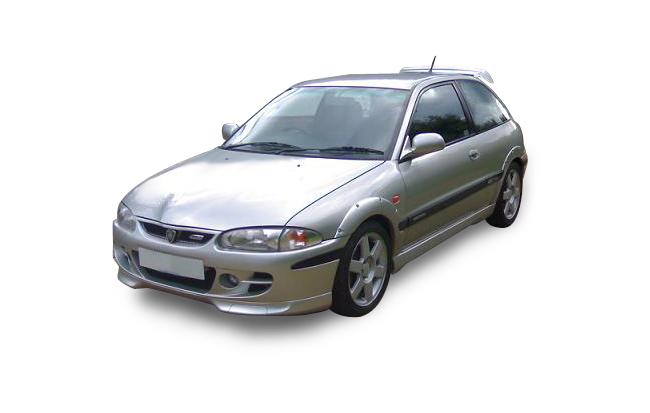Description
This guide has been written for those seeking information, history and detailed specifications for the Proton Satria GTi (also known as the Proton GTi 180 in some markets). This legendary naturally aspirated hot hatch has developed a big enthusiast following in the small number of markets in which it was sold, so we thought it appropriate to consolidate the information available for the cars for the benefit of enthusiasts.
The Satria GTi (which was based on the fourth generation Mitsubishi Mirage / Colt chassis) was substantially different to its base model counterpart, having been re-engineered by Lotus in the UK, which at the time was owned by Proton. Lotus made numerous aerodynamic and handling improvements to the car, which won over motoring journalists and tuners. Further adding to the car’s desirability was the fact that it featured the 1.8 litre 4G93P engine (a non-turbo higher compression version of that found in the Lancer GSR). This engine matched the car’s performance to its handling, and provided a fantastic base for tuners and weekend racers. Its popularity with tuners and entry level motorsport has unfortunately resulted in many of the cars having hard lives and many have been lost over the years. This is great news for parts availability, but has meant that original complete units are rather thin on the ground: this is part of the motivation for writing this guide.
The Proton GTi’s competitors arguably include the Peugeot 206 GTi, the Nissan Pulsar SSS, the Honda Civic VTiR, the Ford Focus ST, the Ford Fiesta XR4 and the Renault Clio 2.0 16v Sport. The Satria GTi was a special car because it came out of nowhere from the non-mainstream brand Proton, which in the competitive UK and Australian markets was not particularly well known at the time.
Production and markets:
The Satria GTi was built from 1998 – 2005, and was first offered as a 1999 model year car. The car was offered in four major RHD markets including Malaysia, Singapore, UK and Australia. A special edition “LE” model was also produced with some additional features (such as leather trim). Only 20 units were delivered to Australia (and an unknown number to other markets). Unfortunately, it wasn’t offered in New Zealand, where we personally think it would have been a hit. It was offered in very limited numbers in some European markets (Germany being one of them), where it was known as the “Proton GTi” or the GTi 318 (and never wore the “Satria” badge).
In the UK the Satria GTi retailed at £14,500. In the Australian market, the GTi retailed for between $28,990 (according to Motor Magazine of April 2002) and $26,990 (based on numerous Wheels magazines from 2004 – 2005).
We have not been able to confirm total production numbers for the Proton Satria GTi. The only record of sales we have seen is confirmation that 160 units were sold in the UK market in the first 6-months after launch. Based on some forum discussion, we make a (guess) that export markets (UK & Australia in particular) would have received around 5,000 GTis in total. Presumably the Malaysian domestic market was much larger, given that there seem to be many GTis available on Malaysian car sale websites at the time of writing this guide. Conversely, looking on sales sites in Australia and the UK, numbers are really dwindling, and most ads are parts only.
